A group of plants I grow a lot in my own garden and in my clients’ garden designs is the perennial Salvias. Salvias are part of the mint family, the Lamiaceae and you can see they’re related both in the look of the leaves and also the shape of the flowers. It’s the scent that truly gives them away however, not that they smell minty, just that they’re so fragrant. The scent of Salvia microphylla when brushed is one of my favourites in the garden.
Generally easy to look after, though often on the tender or near-tender side, the only real task for the gardener is to prune them each year. In the UK this must be done in spring between April and May depending on where you are in the country (south earlier, north later), leaving the old stems on through winter to protect the plant and prevent fungal infections on cut stems.
Not all salvias are the same however and they are split into three main groups:
1) Herbaceous – deciduous
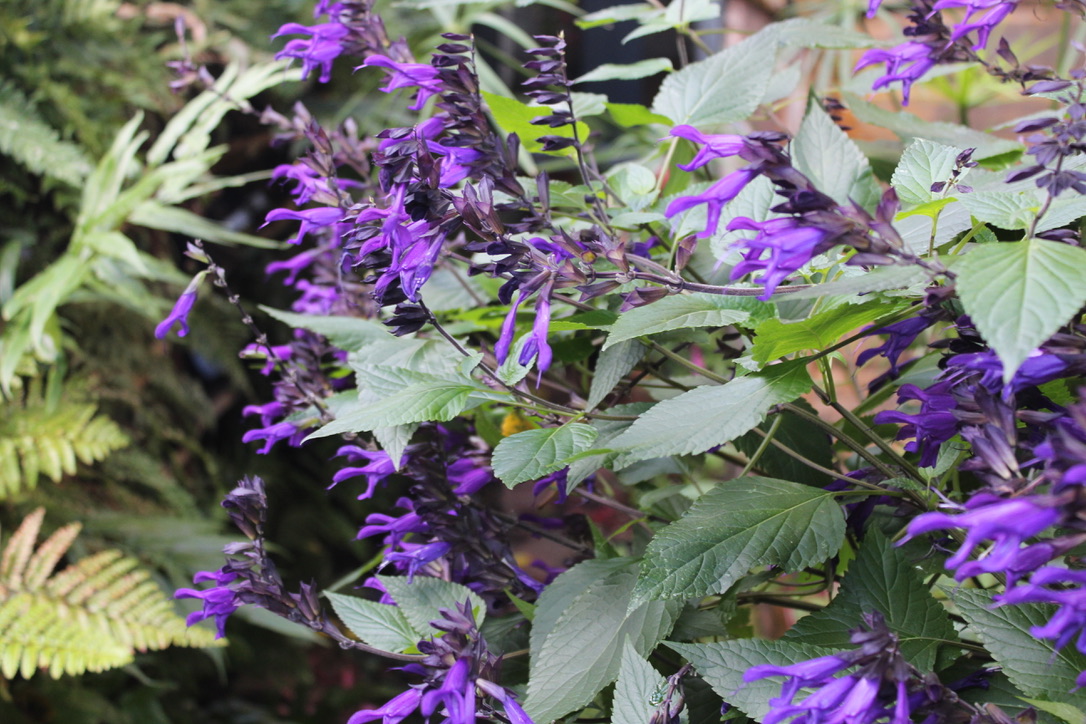
The herbaceous salvias are those that tend to die back to the ground in winter and include the popular Salvia ‘Amistad’, the new closely related cultivar ‘Amante’ and species Salvia azurea, Salvia elegans (pineapple sage), Salvia engelmanii and Salvia guaranatica to name a small number.
In the UK, many of this group die back because they aren’t particularly hardy and are conservatory plants. But to take the popular ‘Amistad’ as an example, I leave the main stems through winter which in cold winters will die completely. In mild winters here in Clapham, London they can remain alive and even flower all winter. Either way, the pruning is the same.
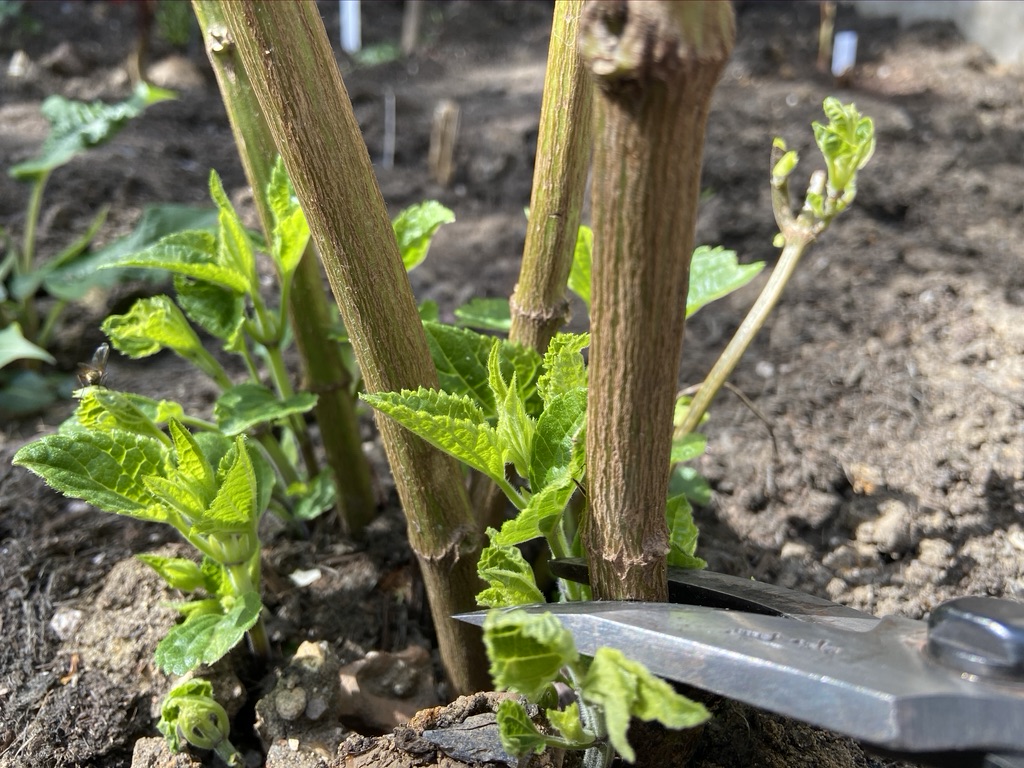
Leave the stems until spring is firmly here and fresh new growth can be seen, then cut the stems down to their lowest shooting node. In this example above new shoots are growing from the base so I can cut the old stems away completely.
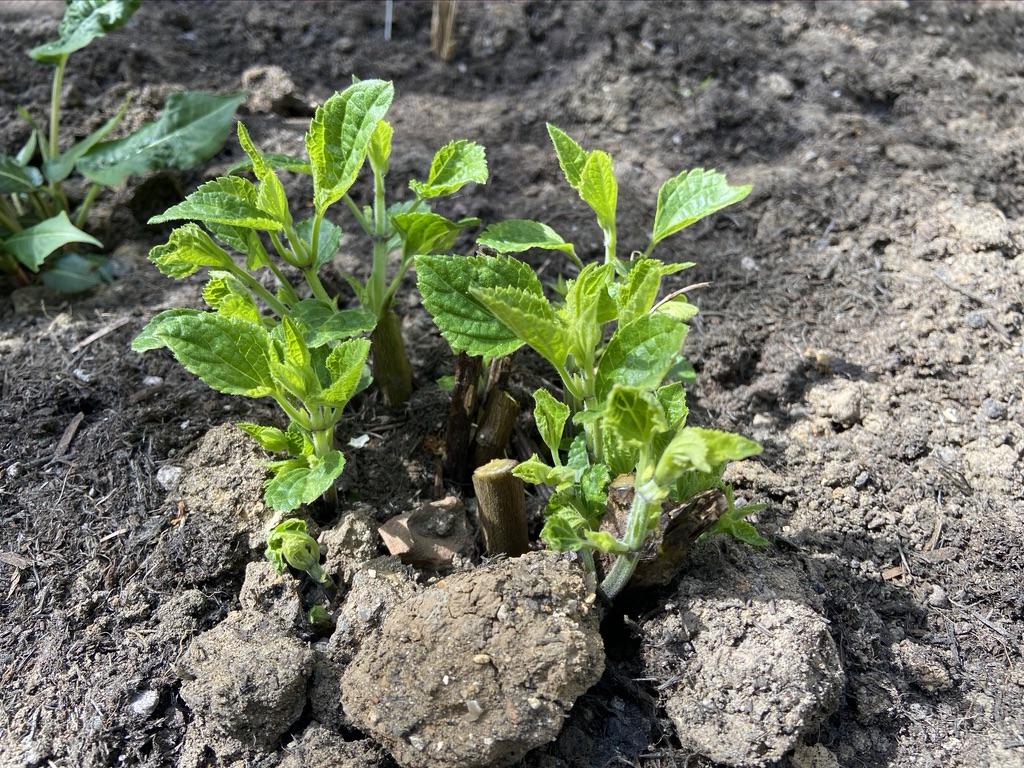
The finished article with new stems growing from the soil, which need protecting from slugs and snails but grow away from them quickly in warm spring weather. In some years if the stems are still alive, I cut them to about 30 – 40cm above ground level and let the shoots higher up grow, keeping them away from the slimy nibbling beasties.
2) Herbaceous – evergreen rosette forming
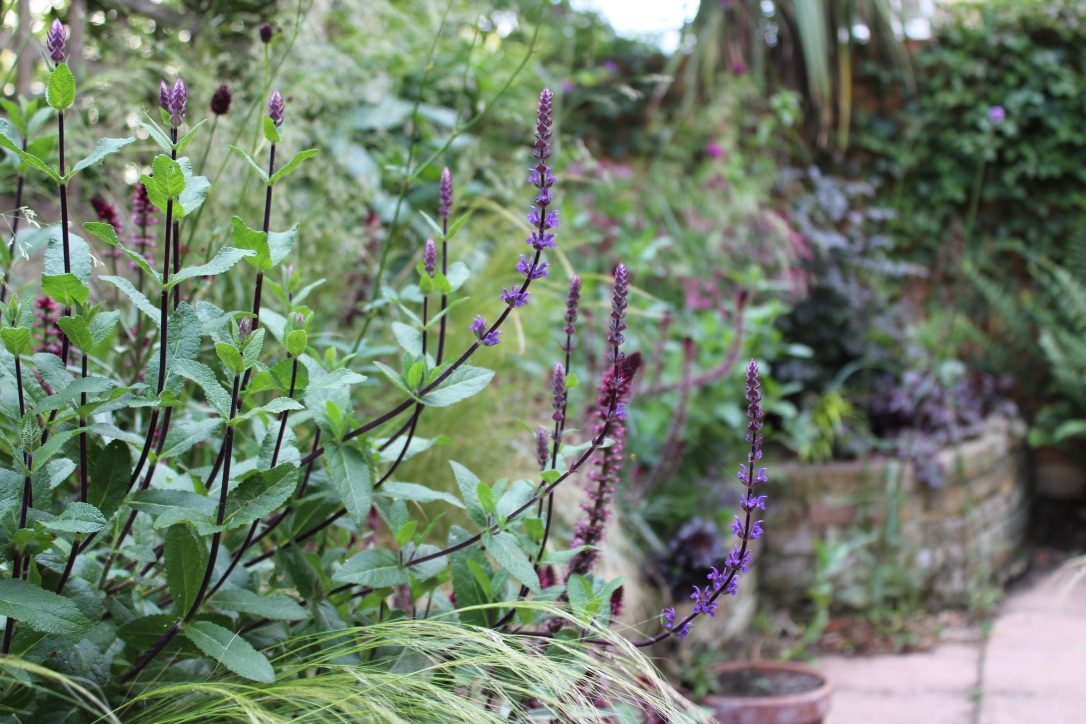
Salvia lyrata, Salvia pratensis and the very popular in the UK, Salvia nemerosa fall into this group. Personally, I find it hard to tell the difference in growth habit between these and the previous deciduous herbaceous Salvias as they tend to all behave the same here in warm London. However, when we do have a colder winter the difference becomes clear as this group does remain largely evergreen and you can see a distinctive ‘crown’ of new shoots forming at the base of the plant in autumn to early winter. Protected beneath the previous year’s growth.
This group of Salvias is easy because you can simply chop off all of last year’s growth in spring when frost is no longer expected. Personally, here in our mild garden, for this group only I actually cut the stems off in winter. Not recommended in colder areas.
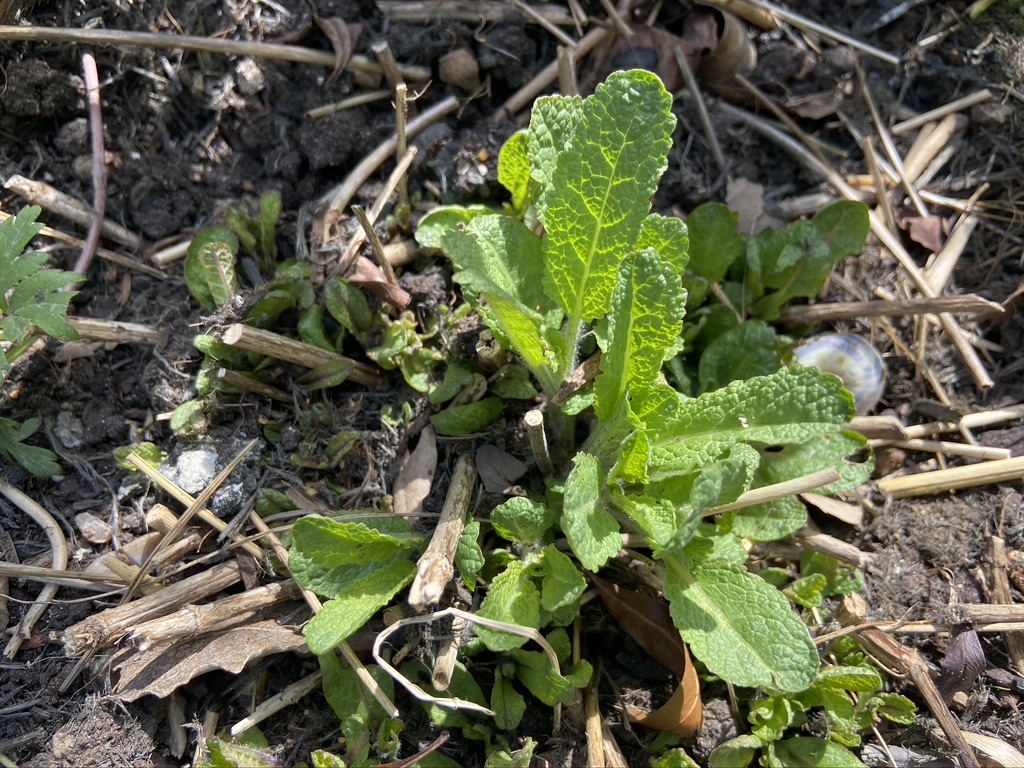
Above you can see many new shoots appearing on the Salvia nemerosa ‘Caradonna’ among the bases of the previous year’s stems. These salvias, S. nemerosa especially, flower in late spring to early summer at which point the flowers start fading as the rest of your garden is taking off. It’s at this time you can act brutally in summer and cut the entire plant back down to the lowest shoots. This will spark new growth and another flush of flowers relatively soon afterwards. In a long season you could try doing this later in summer too, but not too late otherwise the growth will be too soft to withstand winter.
3) Shrub forming

I like all salvias but at a push I think this is my favourite group, they tend to be the hardiest and form woody stemmed shrubs to different sizes. Shrubby salvias include Salvia microphylla, Salvia greggii, Salvia involucrata, many hybrids and the edible herb sage, Salvia officinalis. Common cultivars in this group include ‘Hot Lips’, ‘Cerro Potosi’ and ‘Nachtvlinder’. There are hundreds more and if your plants form a woody bush that doesn’t die back in winter, they’re likely in this group.
Whereas the previous two groups are relatively simple to prune, cutting back to the base, the shrubby salvias require a little more thought. Again, leave growth on through winter to protect the plant from cold, snow and frost. Then strike when new growth is spotted in the warmth of early spring.
Remove all dead, diseased or damaged stems to clear the plant of tat. Then, cut back by about a third to a half to a growing point (two pairs of leaves with shoots between them). This will ensure the plant maintains its structure and size, while also keeping in check to prevent it outgrowing spaces and becoming a bit of a tangled, open mess. It’s a little like the way you’d prune lavender but less tidily.
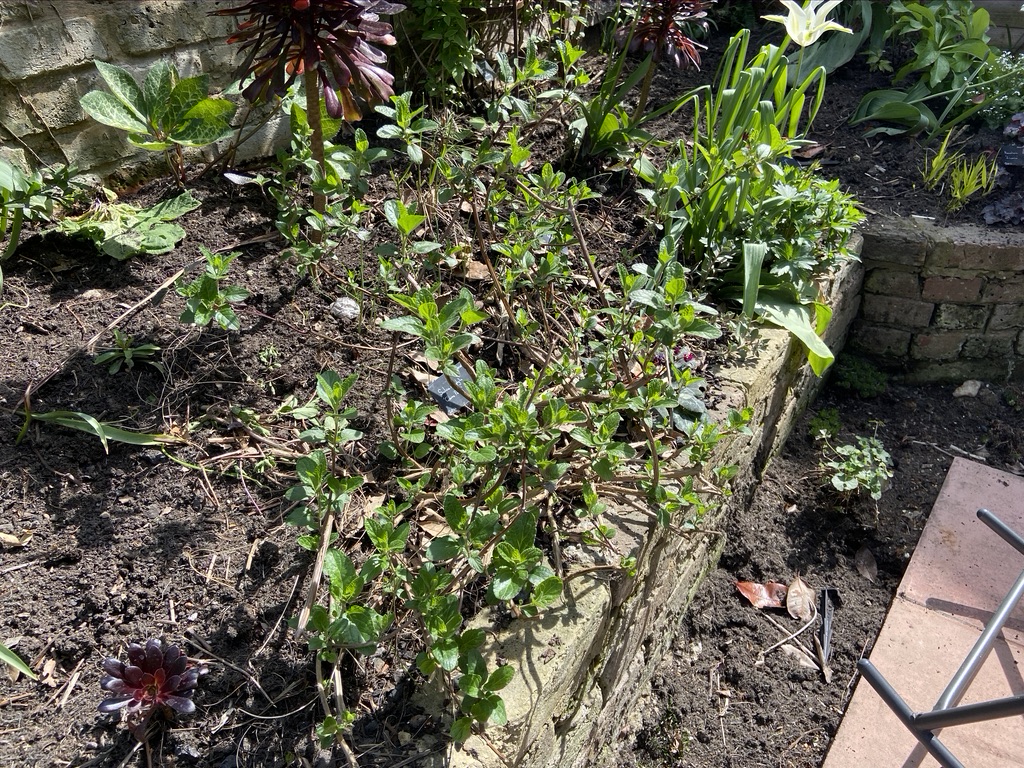
It’s best not to cut below the lowest shooting nodes although, I have found that if you do, new shoots will grow but the plant will be a little slower. So you can hard prune if you want. One down side to hard pruning that I’ve found is that these new shoots from old wood have very brittle joins and are easily snapped off in strong winds. Much better then to keep the strong structure.
In summer you can leave shrubby salvias to do their thing but they can become a little messy as flower stems finish and become bare twigs. Not really a problem at all but I do snip these off to lower shoots. If your garden is quite large, you can speed this process up by giving the shrub a light snip with secateurs taking all old and some new flowers off. This will encourage more flowers fairly soon after. Alternatively, you’ll probably just leave them to get on with it and ignore the little twiggy spent flower stems.













